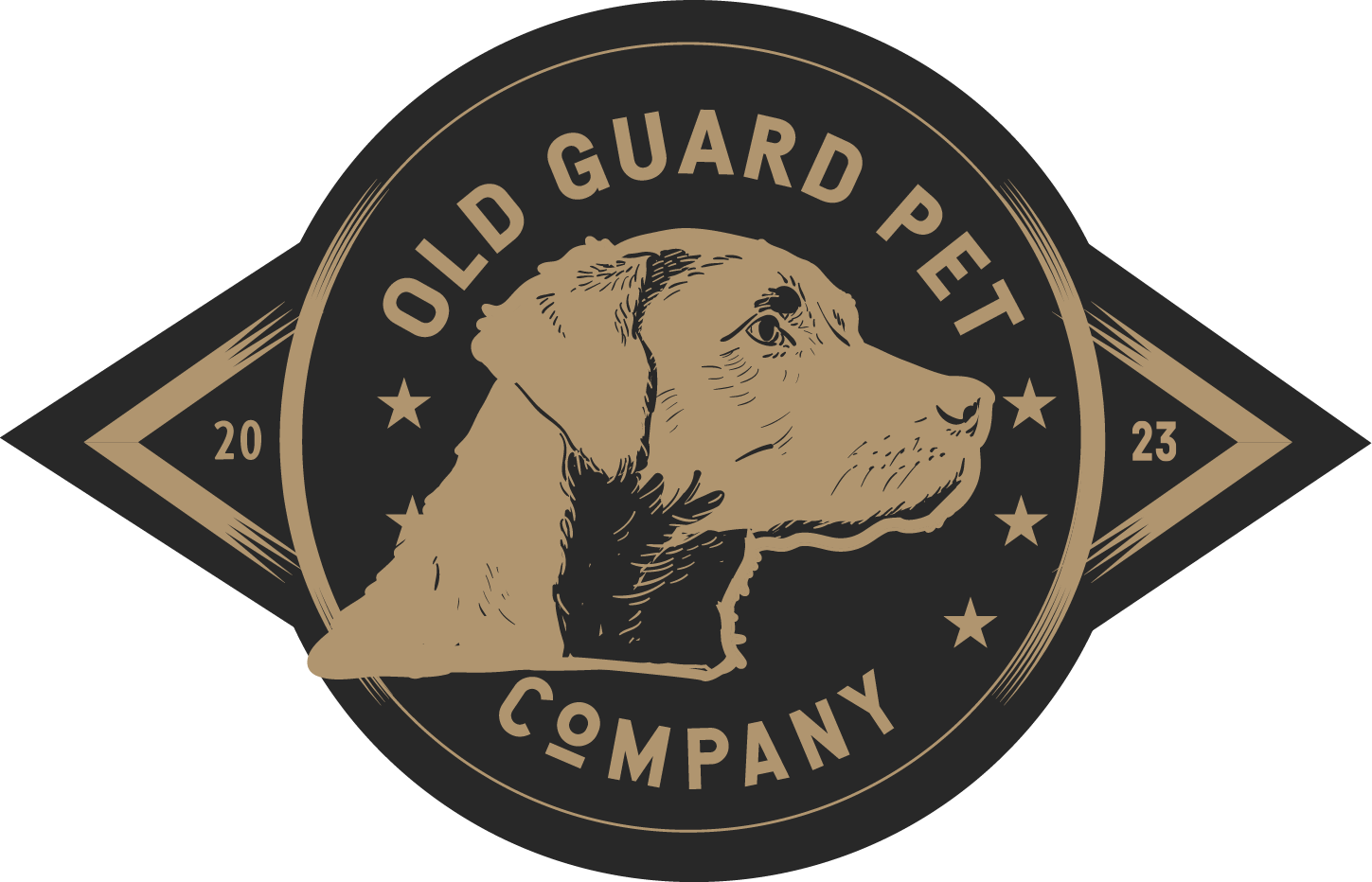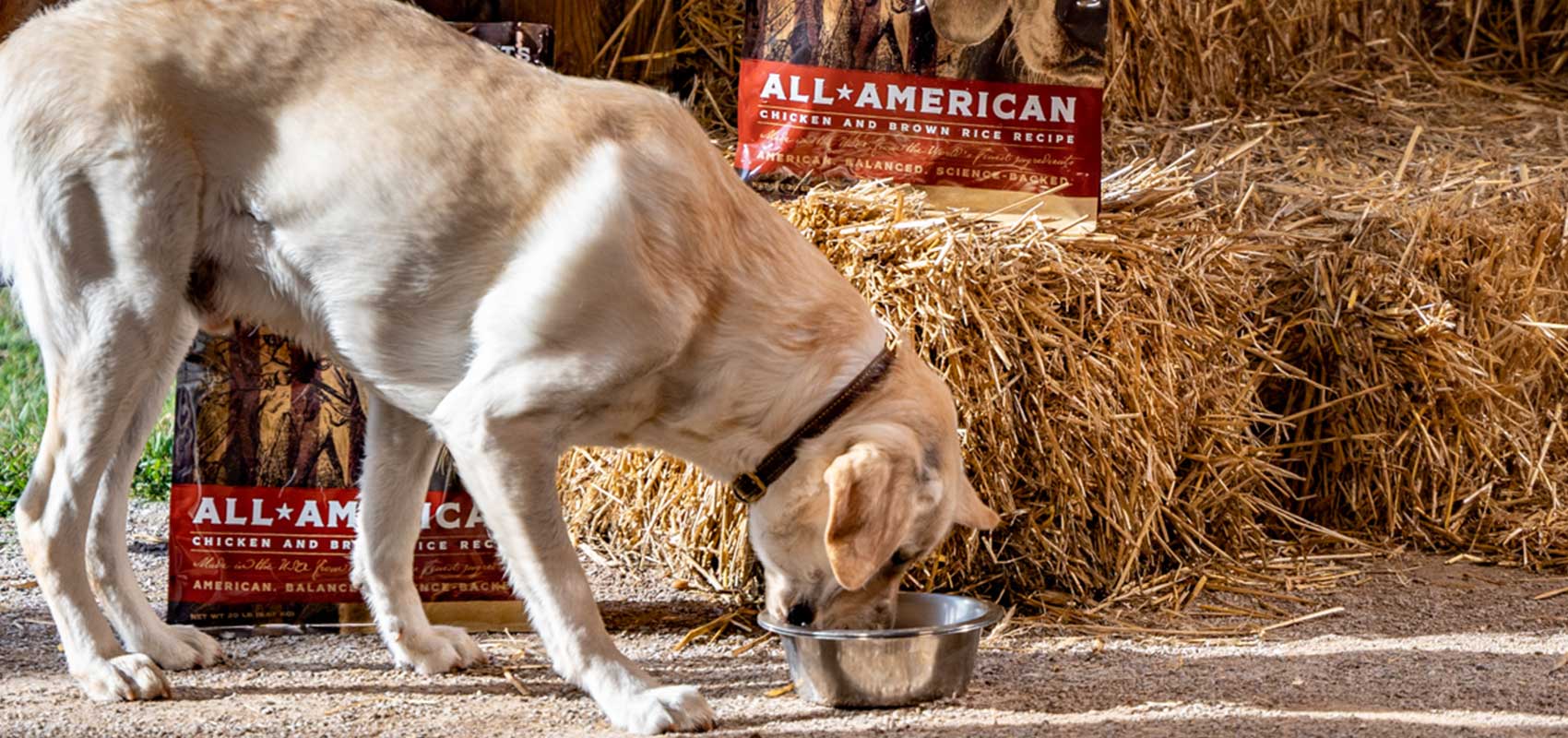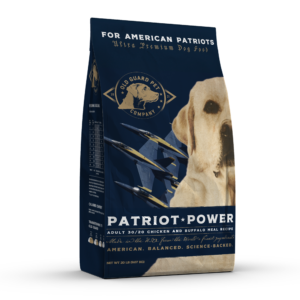As a caring dog owner, you may wonder whether changing your dog’s food is necessary or even beneficial. While it can be tempting to stick to what you know, there are a variety of reasons why changing your dog’s diet may be important. From age to physical activity, breed size to health needs, there are several factors that can affect the nutritional requirements of your pup. The good news is that transitioning to a new food doesn’t have to be a daunting task, and there are some benefits to be gained.
In this blog post, we’ll explore some of the reasons why you might consider changing your dog’s food, and offer some tips on how to make the transition as smooth as possible.
Why Change Your Dog’s Food?
- Age: The most common reason for changing your dog’s diet is related to age. When your puppy is around a year old or 18 months for larger breeds it may be time to move your dog to an adult recipe unless the recipe is specially designed for “All Life Stages,” which means the diet meets the nutritional needs for puppies through to seniors.
- Physical Activity: Certain types of physical activity, from sprinting to more endurance activity, might require a diet that with a higher caloric content and one with a certain balance of macronutrients. This ensures the dog receives the energy and nutrients needed to meet the energy demands.
- Breed Size: Certain breeds and sizes of dogs have unique nutritional needs driven by genetics, physiology, and metabolism. For instance, a large breed recipe will be designed for larger dogs (>50 lbs.), and may include nutritional factors like different protein levels, fiber types and energy density for ideal health tailored for that breed size.
- Health Needs: Certain dogs might need a specific diet for certain health needs. This may require the dog to be fed a product with a particular nutritional formulation or ingredient. Diets designed for specific health needs or disease may only be offered through prescription.
- Brand Beliefs: You spend your hard-earned money giving your dog the best nutrition. Don’t give to corporations that mock and disparage your traditional American values. Buy from a brand that supports, upholds, and defends your uniquely American liberties.
How to Transition Your Dog to Premium Dog Food
Ensuring that you gradually transition your dog to a new food will help avoid any digestive upsets that may be associated. Digestive upsets can cause loose stools and be indicative of gastrointestinal imbalances. While most of these issues are usually temporary these clinical signs of digestive upset can mean that there is a change in the microbial population occurring. When trying new foods digestive changes are not necessarily indicative of the quality of the food but, just a physiological adaptation that is occurring. However, if the digestive issues persist then additional considerations as to what is driving the issues need to be considered and discussed with your veterinarian.
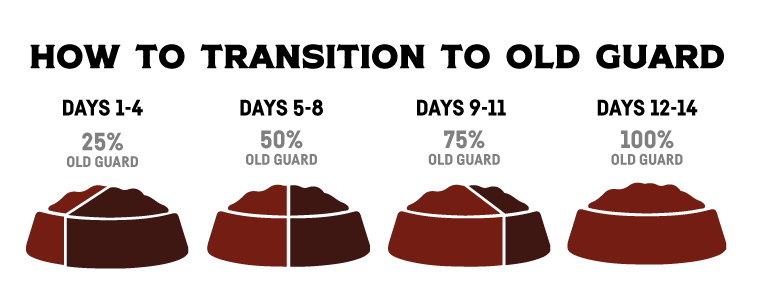
- We recommend that you transition your pet over about 14 days. You know your dog best; if your dog has a sensitive stomach or a loose stool then perhaps slow the transition down and sometimes a shorter transition can be suitable for your dog as well. Start by introducing about 25% of the recipe to your normal food amount, then increase increments of 25% until day 14 when you are at 100%.
- When switching to a high fat diet (for example a diet with 20% of energy coming from fat) then a longer transition might be required. Some even recommend an 8-to-12-week transition to ensure that metabolic adaptation occurs and to help avoid steatorrhea, caused by fat malabsorption, which causes fatty stool. This is especially important for performance dogs that are required to perform optimally and typically consumer diets higher in fat. It is critical that they have metabolically adapted to metabolize the fat for the energy needs.
- Certain ingredients and nutrients in the food can help manage digestive upsets. In particular prebiotics, like fructooligosaccharides, might help support an optimal microbial population in the gastrointestinal tract. Other ingredients like fiber, postbiotics (brewer’s yeast) and probiotics have the potential to help with gastrointestinal imbalances. Ensuring that the diet has a high digestibility (>80%) will also help ensure that digestive upsets are minimized during transition.
- Dogs can also show short term reactions to new diets in regard to the perceived taste or enjoyment. For instance, certain dogs will show preference for new flavors while others will show preference for flavors that they are familiar with. Letting your dog have a few days of exposure to the new food will help overcome any effects of novelty in taste.
Overall, transitioning your dog’s food may be necessary for a variety of reasons; however, changing the diet doesn’t have to be a difficult process. Ensure you introduce the food at a slow pace, keep an eye on your dog’s behaviors and health and tailor the process accordingly. Also, always ensure fresh water is available at all times.
Five Dog Food Nutrition Secrets From a PhD
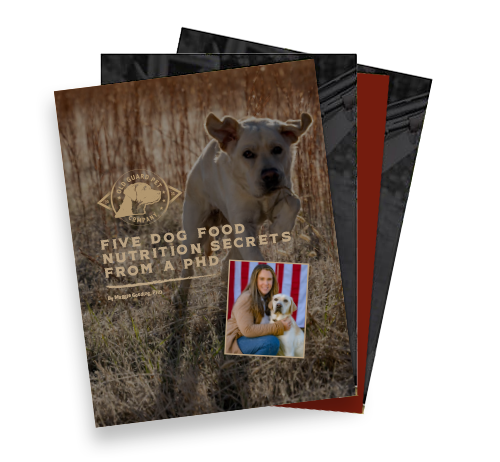
With so much information floating around out there on dog nutrition, how can you be sure you have the facts? In this guide, Founder Maggie Gooding, PhD, in Animal Nutrition and Behavior, with over a decade experience in R&D working on some of the largest pet food brands share five nutrition secrets to help your dog live a longer healthier life.
Get the inside scoop on:
- Nutrients
- Energy Balance
- Weight Control
- Dog Eating Habits
- Fibers and Fillers
Download by filling the form out below:
